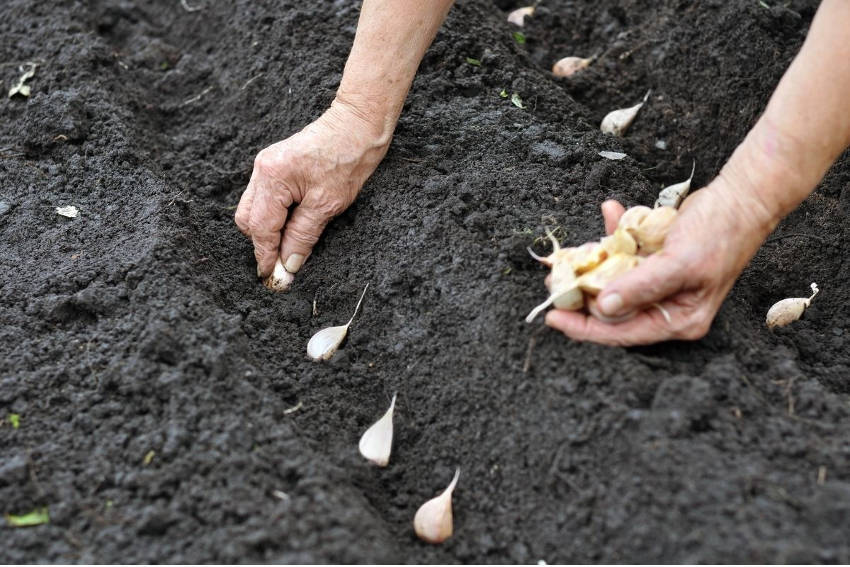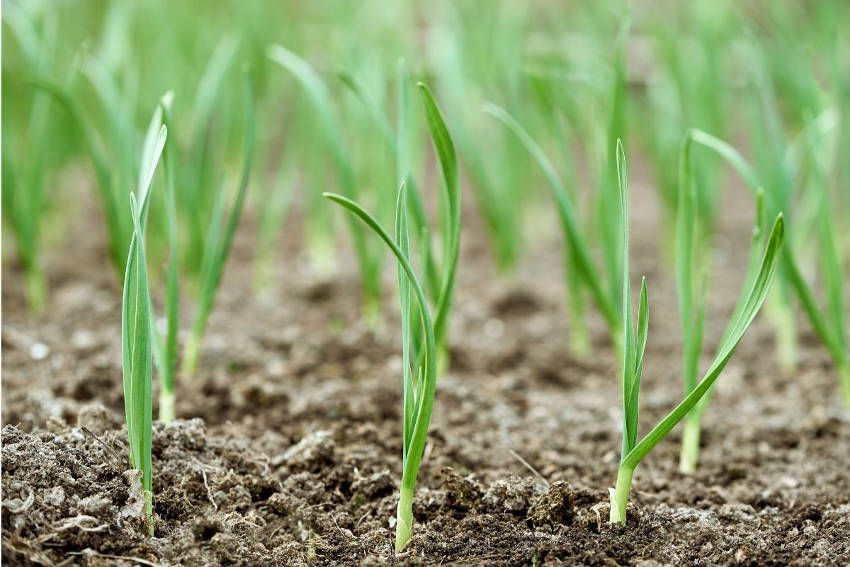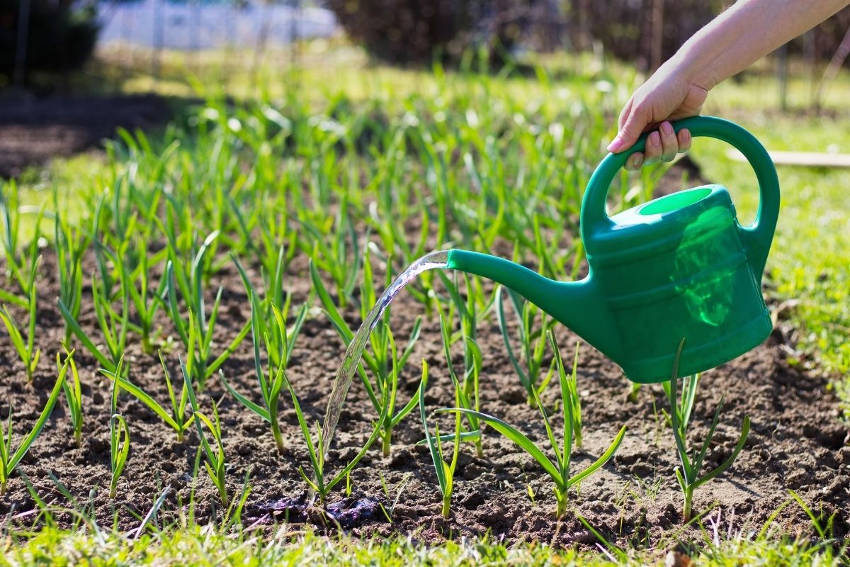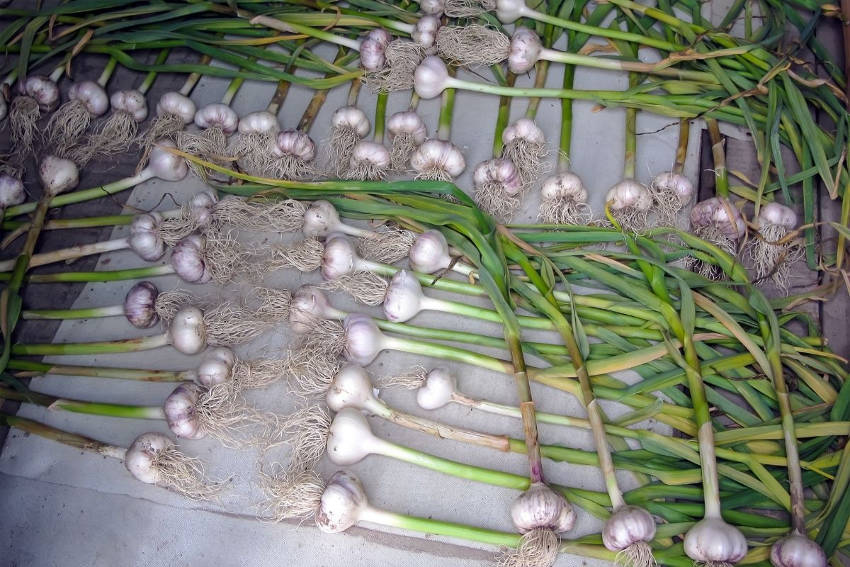How to Grow Garlic from a Clove
Garlic is used in cuisines worldwide. From providing a mild flavour boost in a roast through to the full power of a raw, crushed garlic sauce, garlic can lend character and interest to many dishes.
But if you restrict yourself to the usual bulbs found in shops you could be missing out an interesting range of flavours that's worth exploring. Growing your own garlic lets you try out the many types available, each with their own particular characters and qualities. What’s more, you will know that your crop is local and free of chemicals.
Growing garlic in a home garden is easy. You won't need much space, effort or knowledge to produce delicious bulbs – just a little time. Garlic needs to spend a winter in the ground and can take nine months or more to produce a harvest. But when you harvest the bulbs, your patience will be fully rewarded. Here's what you need to know to get going.
Wide Range of Garlic Cultivars
All varieties of garlic belong to the species Allium sativum, and part of the broader allium family including onions, shallots, leeks and chives. But within the species there's a wide range of cultivars available, with varying flavours, clove sizes, maturing times and storage qualities. Choose a variety that’s suitable for your climate. It's also worth growing several different kinds during a season to provide a variety of tastes and a harvest that's spread over a few months. For more information on choosing your favourite garlic varieties, read our article here.
Although it's often possible to grow a new plant from a bulb bought in a supermarket, in many cases the veggie will have been chemically treated to delay sprouting on the shelf, making growth unreliable. It's better to buy a bulb of seed garlic specifically sold for home growing; by doing so you'll also know which variety you have. Seed garlic bulbs are generally larger than ones produced for consumption, the larger clove size resulting in better plants.
When to Plant Garlic
Garlic requires a period of overwintering to produce the bulbs, and depending on the variety should be planted between February and July. As the days grow shorter, the plant will sprout green foliage above ground, with some varieties also producing a central flower stalk known as a scape. But as the season turns and the days lengthen again, the plant's energy will shift into bulb development, with most varieties being harvested sometime in spring or early summer.
How to Plant Garlic
Garlic prefers a position in full sun, plus very well-draining soil with a slightly acidic pH of between 6 and 7. Digging in plenty of organic matter a couple of weeks before planting will help with both soil factors, as will growing a green manure crop before planting. If there’s any doubt about drainage, mounding the soil up into rows will help. In the heaviest of soils that are prone to waterlogging, making raised beds and cultivating the soil well could be a solution to stop the cloves rotting in the ground.
When ready to plant, make small, 3cm-deep holes in the soil, spaced 10-15cm apart and with 20cm between rows. Break a whole bulb of your chosen garlic variety into individual cloves and plant each one into its own hole with the thick end at the bottom. Do not plant very small cloves, save them for use in the kitchen. Smooth over the soil and water well to ensure the cloves are fully covered.
For less regimented growing, you can also plant individual cloves among other plants, where the garlic's aroma will help repel many pests. Garlic makes a great companion plant for brassicas, tomatoes and even roses. However, avoid growing too close to peas, beans and other legumes, as garlic is said to inhibit their growth.
Ongoing Care and Cultivation
Garlic is a forgiving plant to grow and needs only basic attention over its life. One important point is to use a mulch to suppress weeds, retain moisture in the soil, and also give some protection against any extremes of winter temperature. Use an open mulch such as sugar cane, pea straw or lucerne, and spread it in a layer between 5cm and 10cm deep. This can be done immediately after planting the bulbs, as the shoots will push through so long as the mulch isn't too tightly packed.
Garlic does not require heavy feeding. About six weeks after the first leaves emerge, fertilise lightly every month using either a top dressing of blood and bone that can be watered in, or a liquid fertiliser that's rich in nitrogen. Stop feeding the plants in late winter to encourage bulb growth rather than fresh foliage.
Watering the soil deeply and regularly will spur strong and deep root development. Avoid watering the foliage or splashing it heavily as this will increase the risk of fungal diseases.
Lastly, if you're growing a hardneck variety such as Creole, Rocambole or Purple Stripe, the plants will produce flower stems or scapes as they grow. Removing these will help to increase the bulb size. You may like to leave a couple of plants intact to watch the scapes develop and to enjoy the miniature cloves or bulbils that will be produced around harvest time. The scapes are edible and are a seasonal specialty in European cuisines.
How to Harvest Garlic
Garlic should be ready to harvest in late spring or early summer. When the bulbs are nearly ready, the foliage will start to wilt and turn brown. At this point, stop watering, and then wait until there are only four to six leaves still looking green and healthy before harvesting.
On a dry day, use a fork to gently lift the entire plant from the bed, shaking off the excess soil. Place the whole plants on wire racks, or hang them in bunches, leaving them in a dry, cool, airy place for between three and 10 weeks to cure them slightly before storage. Once this period is over, suitable softneck varieties can be braided together if desired.
Once the garlic has been cured, snip off the roots from each bulb and trim the stem back to 2.5cm, discarding any bulbs that are damaged, diseased or otherwise below par. Store in a dry, airy room leaving plenty of space between each bulb, for example by placing them on a wire rack or hanging in mesh bags to ensure good air circulation.
Common Problems when Growing Garlic
Garlic is a robust crop that shrugs off most issues. However, there are a few common problems you may come across.
- Black aphids can breed on foliage, hindering growth as they feed on the sap. Remove them by using a spray made of horticultural soap, eco-neem or another organic treatment.
- Onion thrips are tiny insect pests that are carried in on the wind. They can harm the plant both by feeding and by laying layers of eggs that interfere with photosynthesis. You can recognise an infestation by silvery marks left on the leaves. Treat using a soap spray.
- Wet weather in early spring can activate several fungal diseases already present in the soil, including downy mildew and fusarium root rot. If these problems strike, it's best to dig up and destroy the crop rather than letting the fungus become even more established. Crop rotation is an important way of preventing these diseases building up.
- One possible disappointment at harvest is a bulb that forms just a single, large, round clove. This can be caused by planting seed cloves that are too small, by planting them too late, or by excessively hot or wet conditions while they're growing. These ‘rounds’ can be eaten just like regular cloves, or replanted in autumn when they should go on to grow into normal bulbs for the next harvest.
Keep an eye open for these potential problems, deal with them as soon as you can, and you'll be rewarded with a crop of garlic you can enjoy immediately or store for near year-round use.









